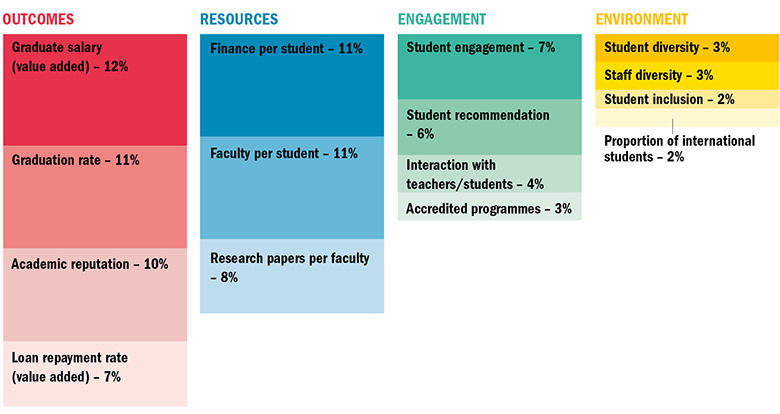Register for the Times Higher Education Teaching Excellence Summit 2018 at the University of Glasgow
We must be frank – university league tables do not do a great job in capturing and rewarding excellence in teaching.
All the global rankings lean heavily on university research – in large part because of the ready availability of widely accepted data and metrics that can be fairly compared across national borders. Although Times Higher Education has the most comprehensive methodology for ranking institutions worldwide – employing 13 separate performance indicators covering the full range of a university’s core activities, including teaching – even THE’s balanced metrics are weighted more towards research.
This is the correct approach – THE’s World University Rankings have since 2004 judged research-intensive institutions that recruit research talent globally and publish their work in global journals. The tables and data are now established as a major geopolitical barometer, trusted by governments and university leaders as a powerful indicator of institutions’ competitiveness in the global knowledge economy. So the world rankings will retain their concentration on global research universities.
But Times Higher Education constantly strives to uncover richer and deeper insights into global higher education, and our data science team has been working to develop metrics for teaching excellence.
Last year, we made a breakthrough. In September 2016, we published with America’s biggest newspaper, The Wall Street Journal, a unique new ranking of US institutions. The WSJ/THE US College Rankings focused not on institutional research but rather on student learning and graduate success. This allowed us to evaluate more than 1,000 US universities and colleges, including those such as liberal arts colleges with little engagement in research.
The WSJ/THE US College Rankings broke the mould in the US by rejecting indicators such as selectivity in admissions and by concentrating on what matters most to students: Does the college have sufficient resources for quality teaching? How successful is it in ensuring that students graduate, find good jobs and repay their loans?
A major innovation was THE’s Student Survey – a poll of 100,000 current US students that explores not their satisfaction with university facilities, services and tuition, but rather their engagement with their learning. A series of questions examines the depth of students’ immersion in the intellectual and social life of their institutions, how accessible they find their professors, and if they would recommend their college experience to others.
This earned kudos from a noted critic of rankings, Cathy O’Neil, the mathematician and author, who said: “I’m really happy about this. This is huge. In a good way.”
Now we want to give students in Europe similar insight about institutions on the continent. In addition to our analysis of European research universities drawn from the established World University Rankings, next year we plan to produce our first European teaching excellence rankings.
We intend to use the basic concepts and broad pillars of metrics established with the WSJ/THE US College Rankings (see below). But we will need the help of the European university community to tailor the plans to a European context.
Some datasets will not be available across the European nations that we will focus on; others, such as the Student Survey, we will develop ourselves. Some metrics will be more relevant in a European context, some less so. So Times Higher Education will be consulting widely.
WSJ/THE US College Rankings methodology: How might this apply to Europe?

Help us shape the inaugural Times Higher Education European teaching excellence ranking by giving us feedback on our plans. Email profilerankings@timeshighereducation.com
Register to continue
Why register?
- Registration is free and only takes a moment
- Once registered, you can read 3 articles a month
- Sign up for our newsletter
Subscribe
Or subscribe for unlimited access to:
- Unlimited access to news, views, insights & reviews
- Digital editions
- Digital access to THE’s university and college rankings analysis
Already registered or a current subscriber?
